Collection
THE 1919 COLLECTION
A collection designed by Helga Isager. The 9 designs in the collection are all inspired by the works of the female weavers from The Bauhaus Art School.
Helga Isager writes about the collection:
“The women weavers of the Bauhaus art school fascinate me deeply and has done for some time. In 1919 the Bauhaus art school was founded in the city of Weimar in Germany with the vision of bringing arts and craft into people’s everyday lives, by rethinking both the detailed interior designs but also the architectural exterior design.
When I first started the research for this collection, a design for a textile art piece by Gunta Stöltz especially captured me. I found it obvious to use the beautiful colours and the abundance of geometrical patterns offered in the draft for knitwear. This piece alone could have been the base for an entire collection. During the process, however, the beautiful works by weavers Anni Albers and Otti Berger, also offered great inspiration. ”
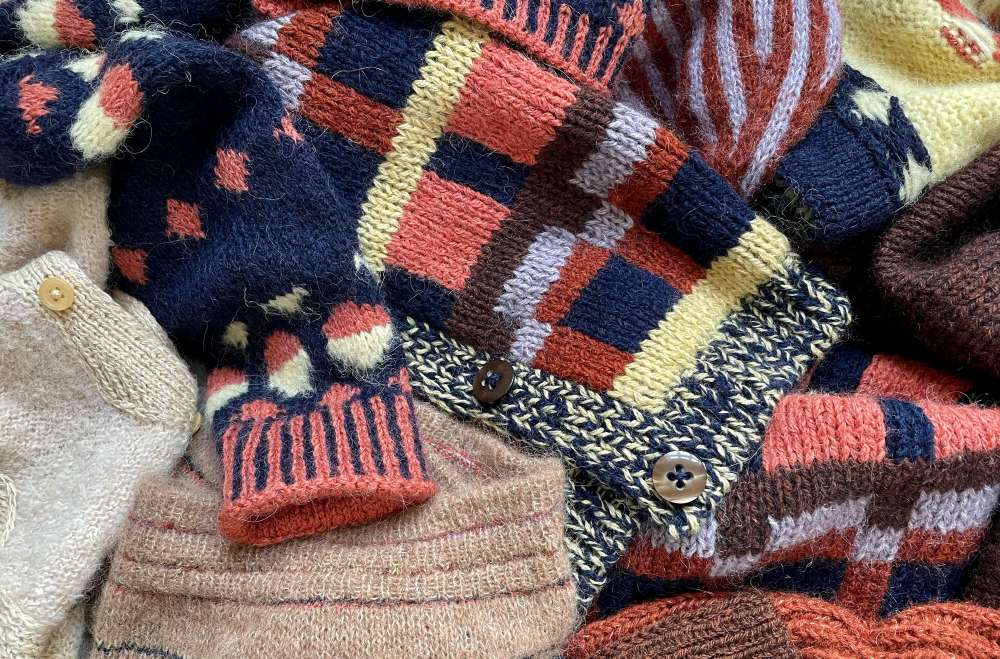
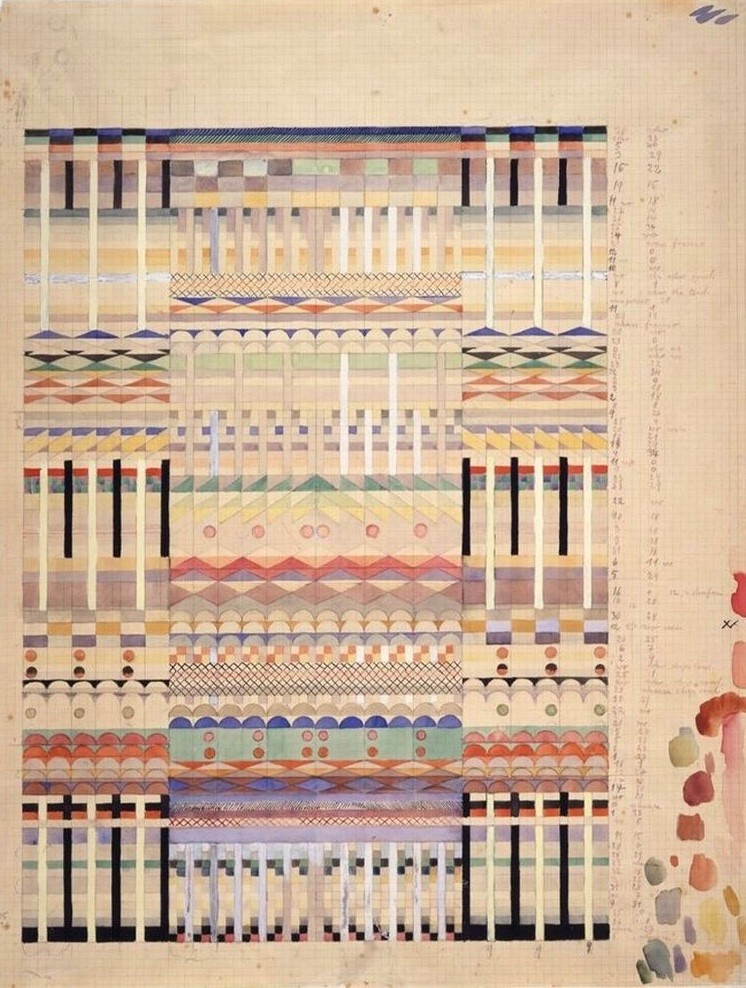
The collection consists of 9 styles: two sweaters, two cardigans, a vest, a polo shirt and skirt set, a cowl and a beanie. The single patterns will be released during February and March, 2025.

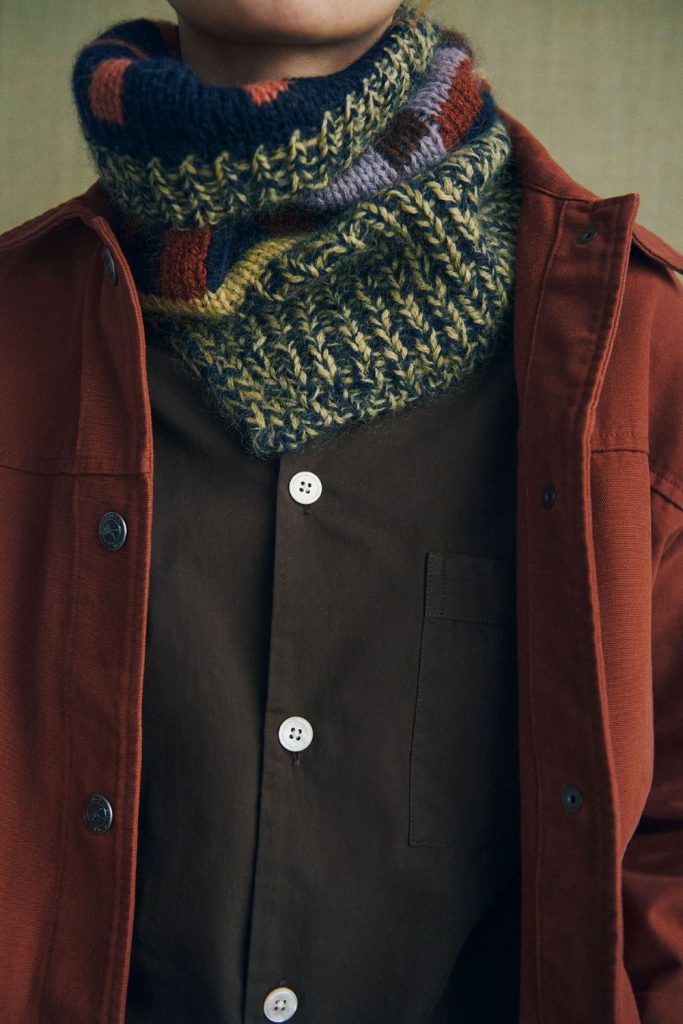

ANNI COWL / Design: Helga Isager
My work with a new collection starts with choosing the colours. I can’t see the full picture until I have decided on the colour palette. Often, one single colour can change the look significantly and add an interesting angle to a safe and dull palette.
Anni Cowl is the first design I ever made using multi coloured double knitting; a technique where both right sides are knitted simultaneously. You don’t have to worry about colour changes and long strands of yarn on the wrong side, as these are sandwiched between the two layers of knitted fabric. Furthermore, the double knitting technique has the advantage that the knitted fabric is reversible.
I became fascinated by the combination of marled rib-knitting and double knitting, and in the collection a vest is knitted using the same technique.
The rib edges are knitted in two colours (A and B), and when the double knitting begins each stitch is separated and thus the number of stitches doubled. One side is knitted with colour A and the other side with colour B. It sounds more complicated than it is! For this pattern, my friend, Helga Jóna, has made a tutorial video that makes the process easy to understand.
MATERIALS
Isager Alpaca 3
Isager Highland
Isager Silk Mohair
Isager Jensen Yarn
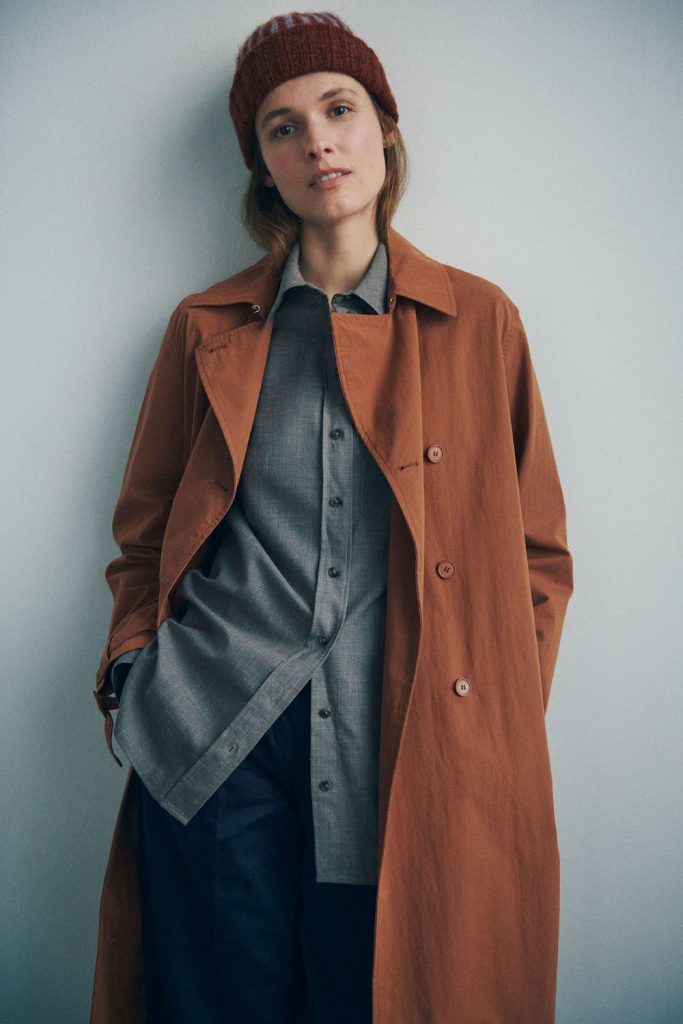
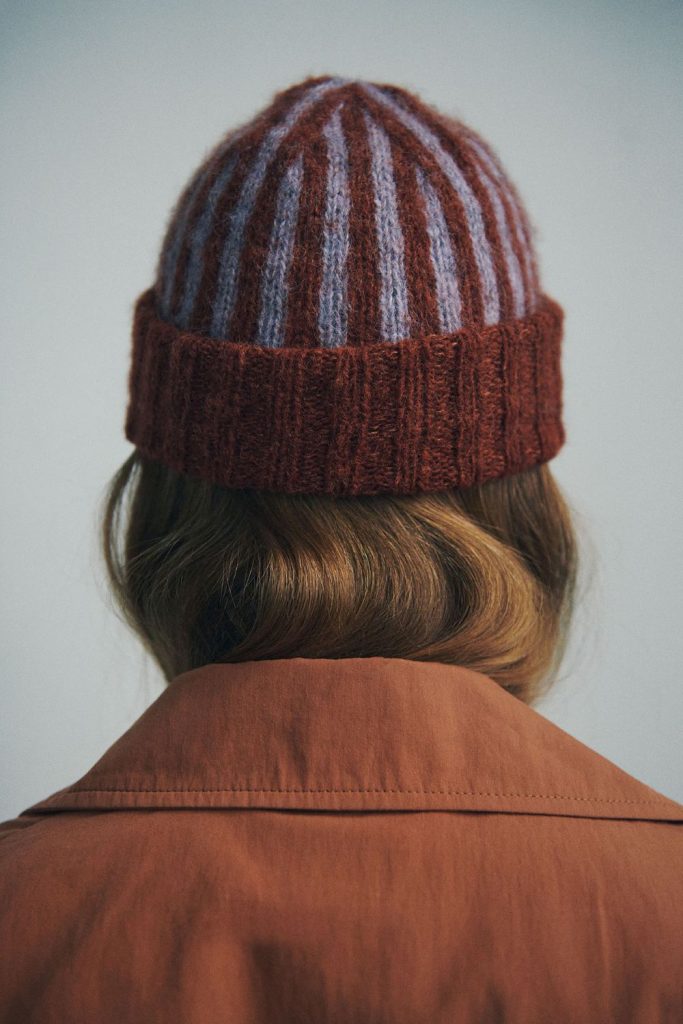
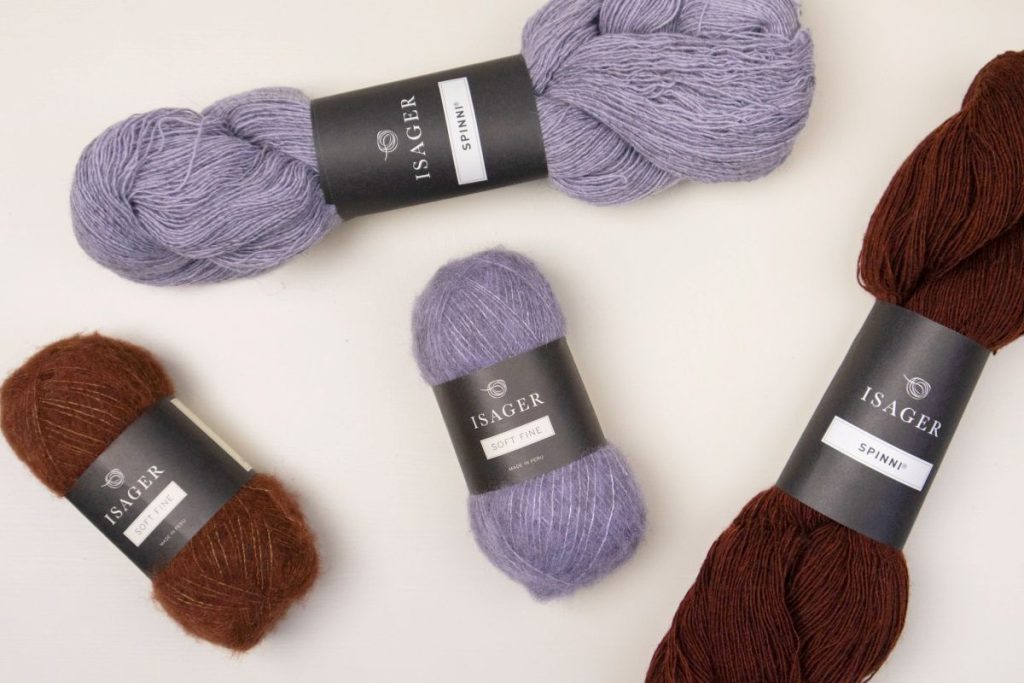
ANNI BEANIE / Design: Helga Isager
Annie Beanie is a classic beanie with an untraditional colour combination. The beanie has a wide ribbing and the vertical stripes are made using jacquard knitting. If one does not know this technique, this is a good pattern to begin with, as you completely avoid the slightly troublesome purl rows.
MATERIALS
Isager Spinni
Isager Soft Fine
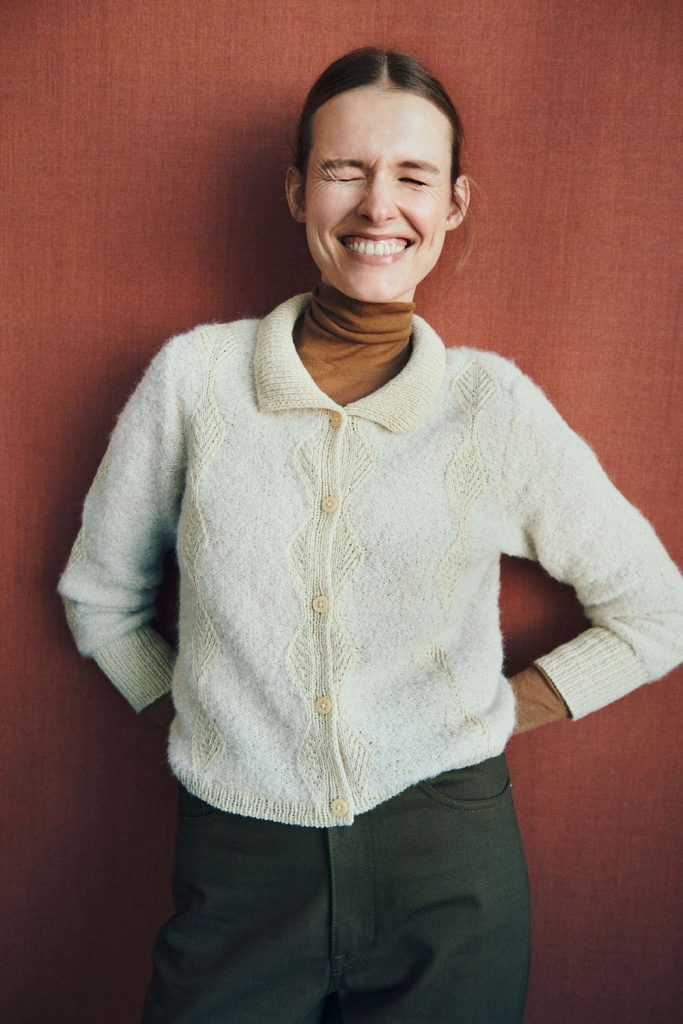
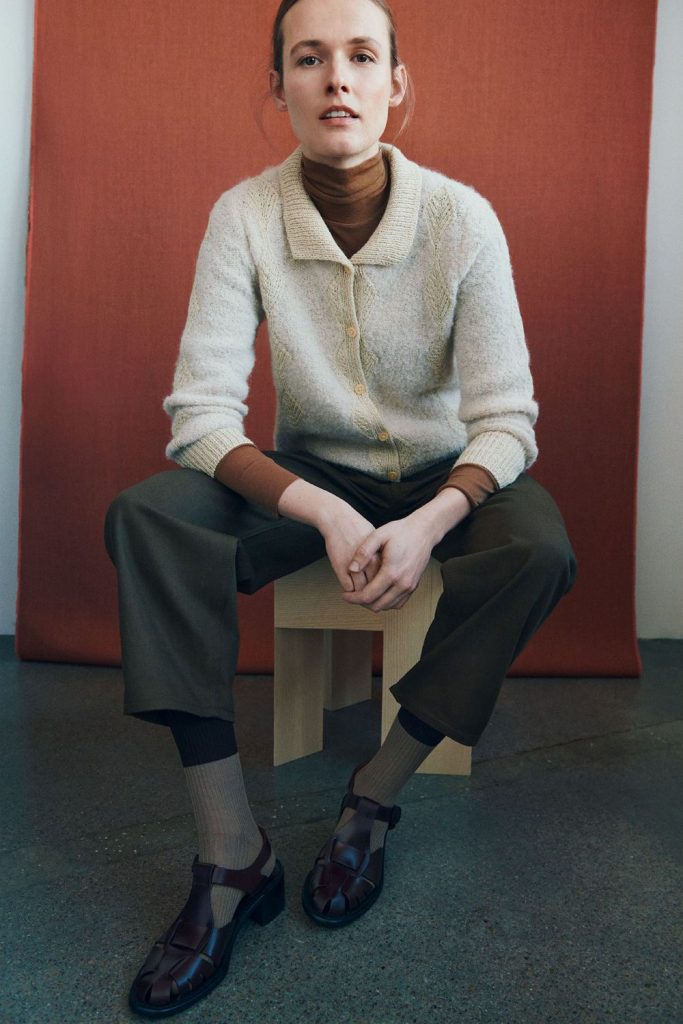
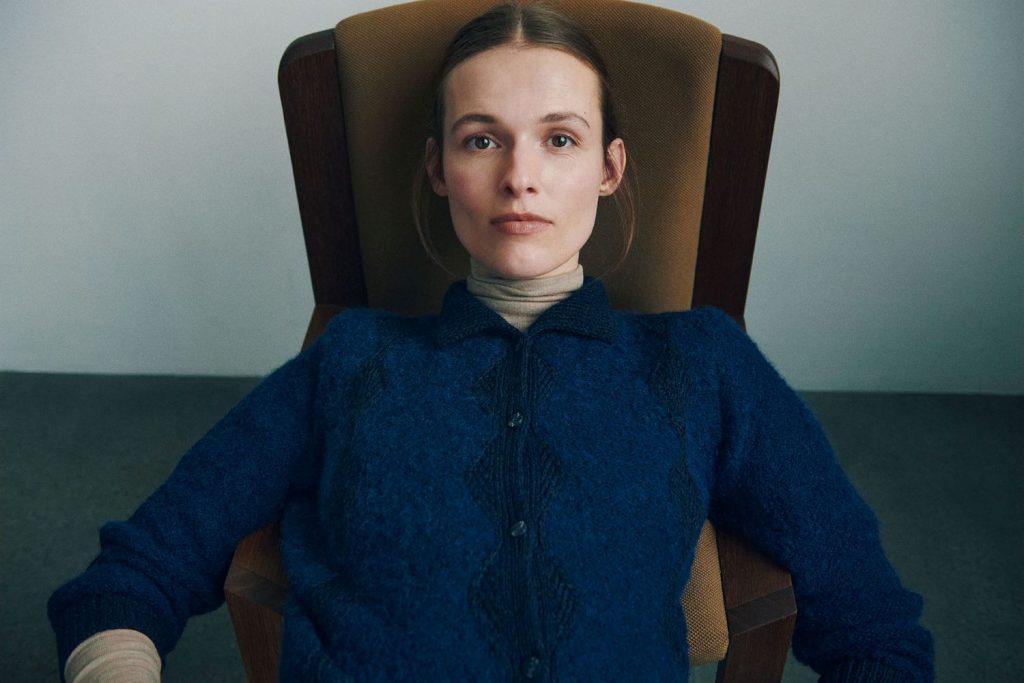
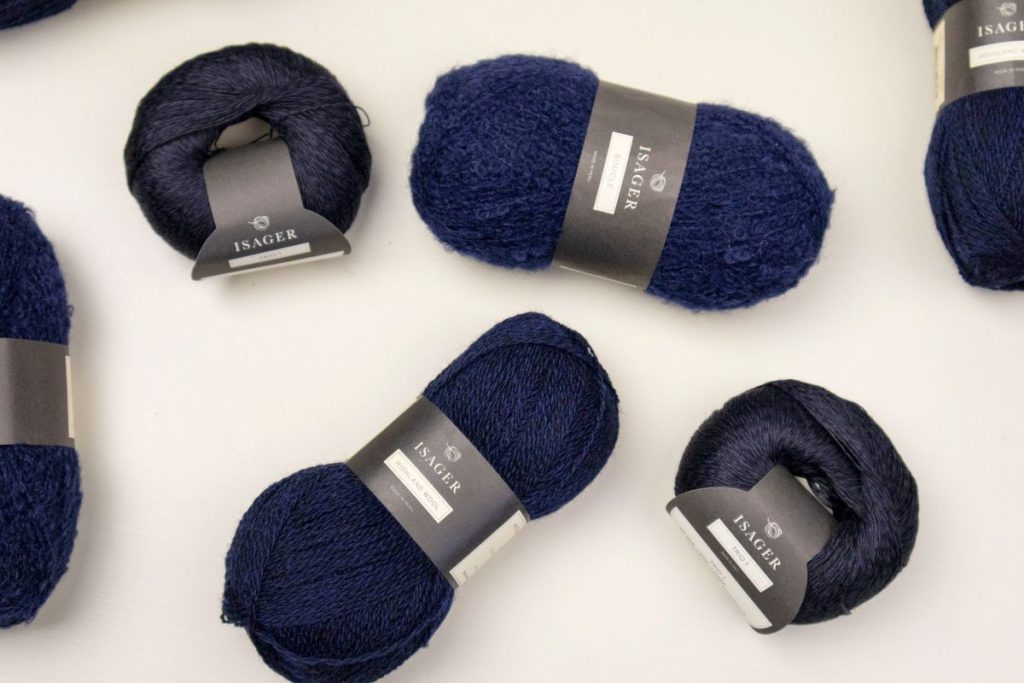
OTTI CARDIGAN / Design: Helga Isager
Otti Cardigan is a further development of my Forest Pullover design in which the same diamond shaped pattern is used. For this cardigan I have combined smooth, shiny yarns with more furry yarns, and to make the pattern stripe more visual, the purled stitches between the diamonds have been knitted with bouclé-yarn. To avoid long threads on the wrong side, I have used intarsia knitting.
The cardigan is worked in five pieces, and it has a well-fitting set-in sleeve. Even though there is a tendency towards finish-free knits, I very much like the classic set-in-sleeves that are sewn on. Finishing takes time if done properly, but the reward is a piece of clothing that keeps its shape much better and stays longer in the wardrobe.
MATERIALS
Isager Highland
Isager Trio 1
Isager Bouclé
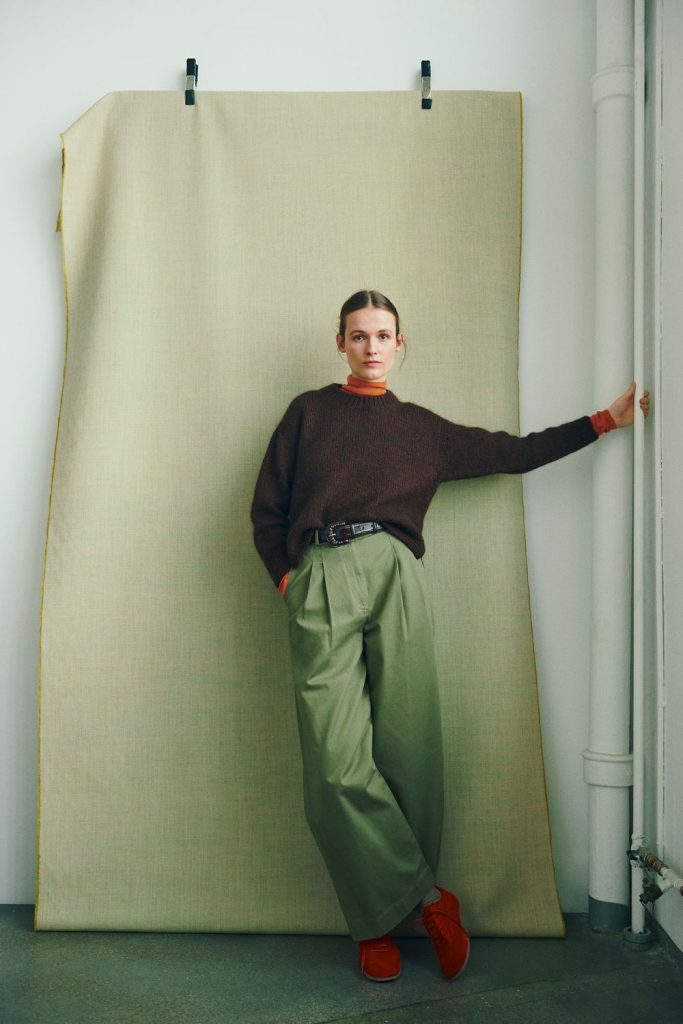
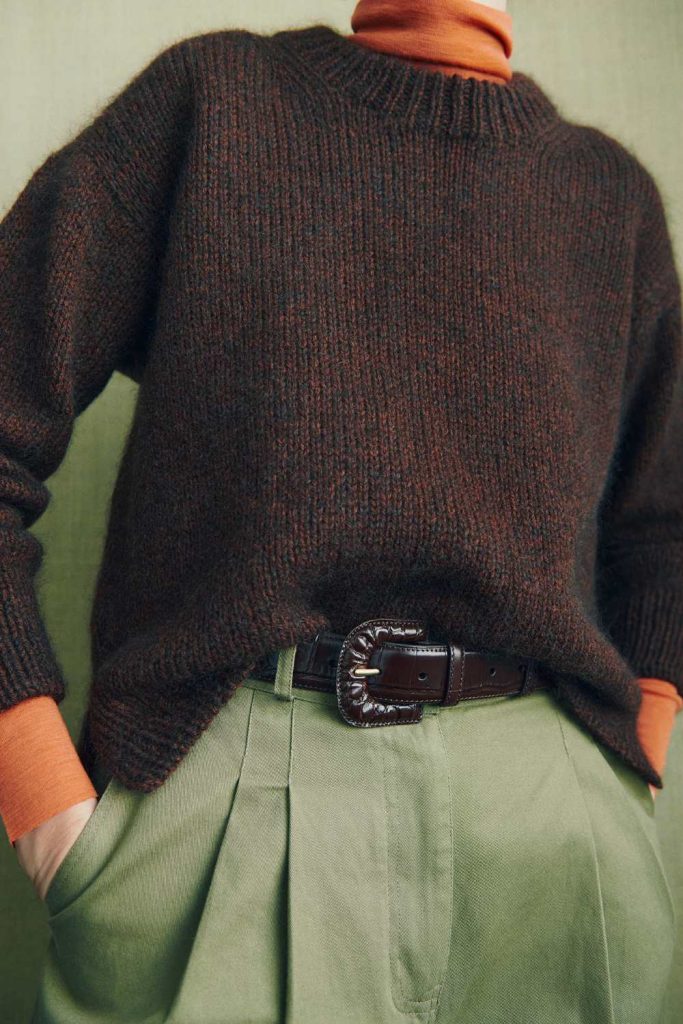
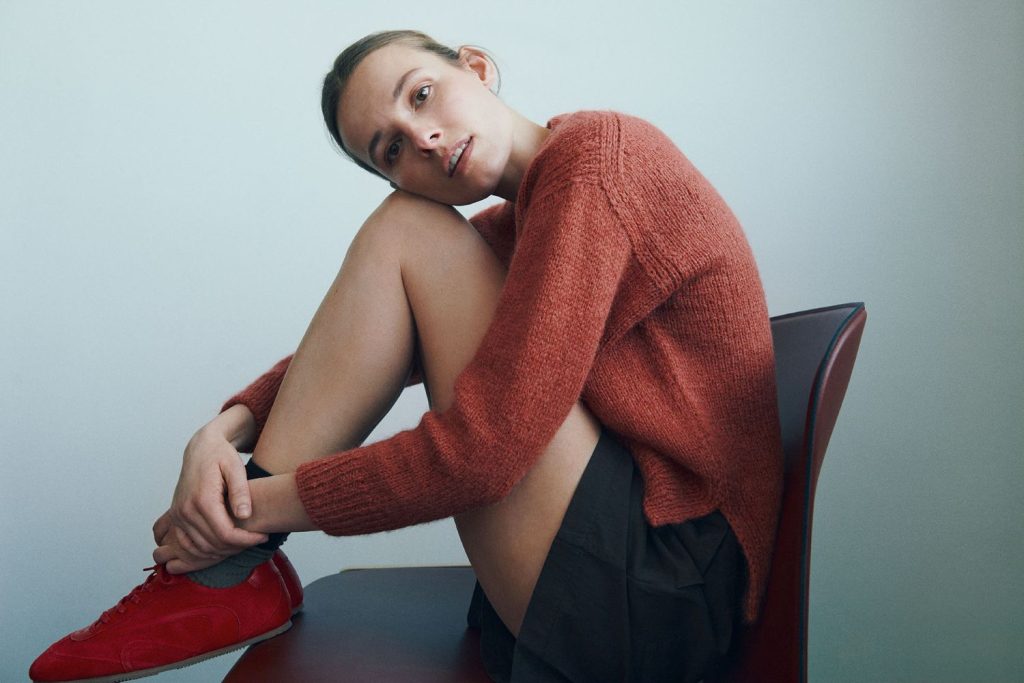
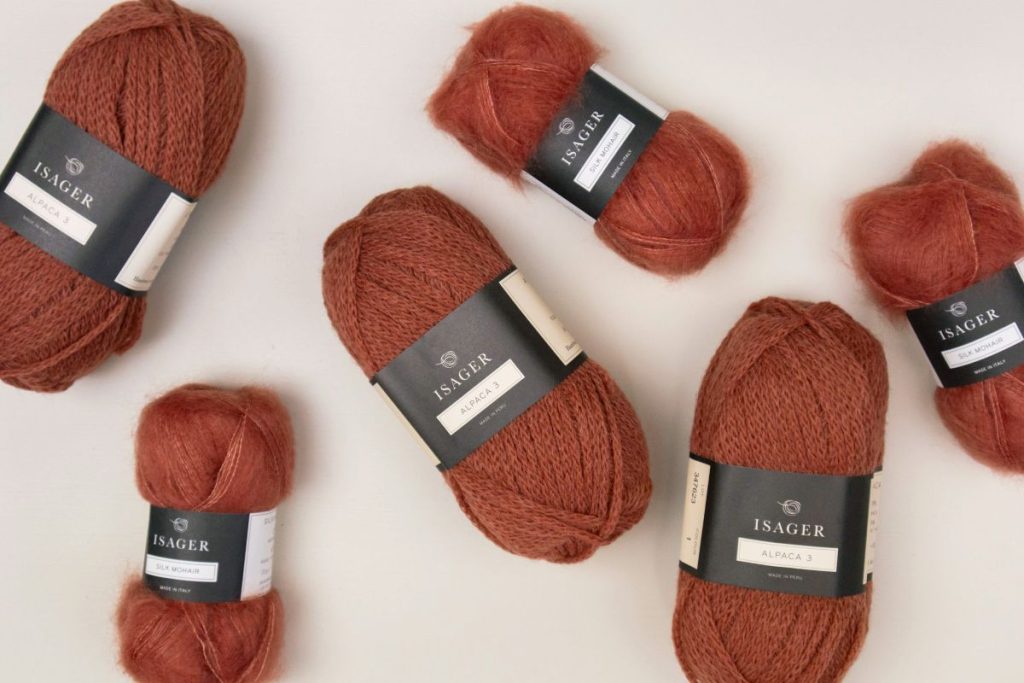
OTTI SWEATER / Design: Helga Isager
My original idea with the Otti Sweater was to work with different textures like in Otti Cardigan. I wanted to work the ribbings in a different colour and quality, but my swatches did not turn out like expected so, I went with a unicoloured and wearable sweater instead.
Otti Sweater is worked back and forth in stockinette stitch.
The back is made first. Ribbing is worked down the sides from the armhole. The rib stitches are set to rest while short rows are worked over the shoulders. Now, the ribbing is worked to join the shoulder stitches and stitches are picked up along the ribbing, the neck is shaped, and the front is knitted. Finally, stitches are picked up from the armhole. Short rows are worked in the beginning of the sleeve, making sure that the stitches do not pull down the shoulder seam, and the sleeves are worked back and forth. For finishing work, the side- and underarm seams are sewn together.
MATERIALS
Isager Jensen Yarn
Isager Silk Mohair
For a softer version, Isager Jensen Yarn can be replaced by Isager Alpaca 3.
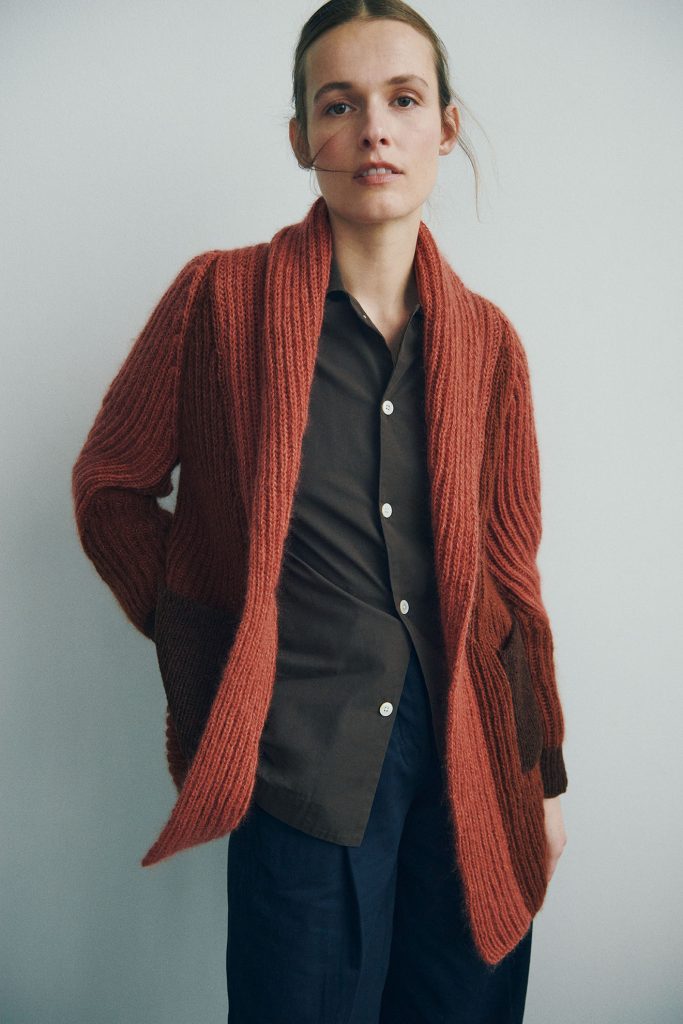
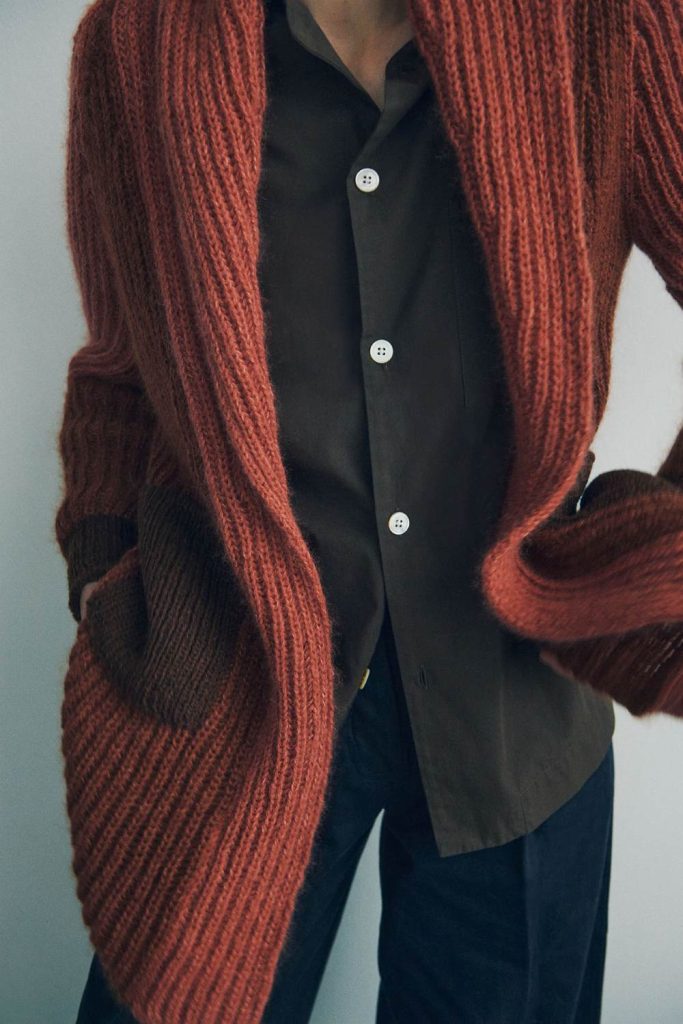
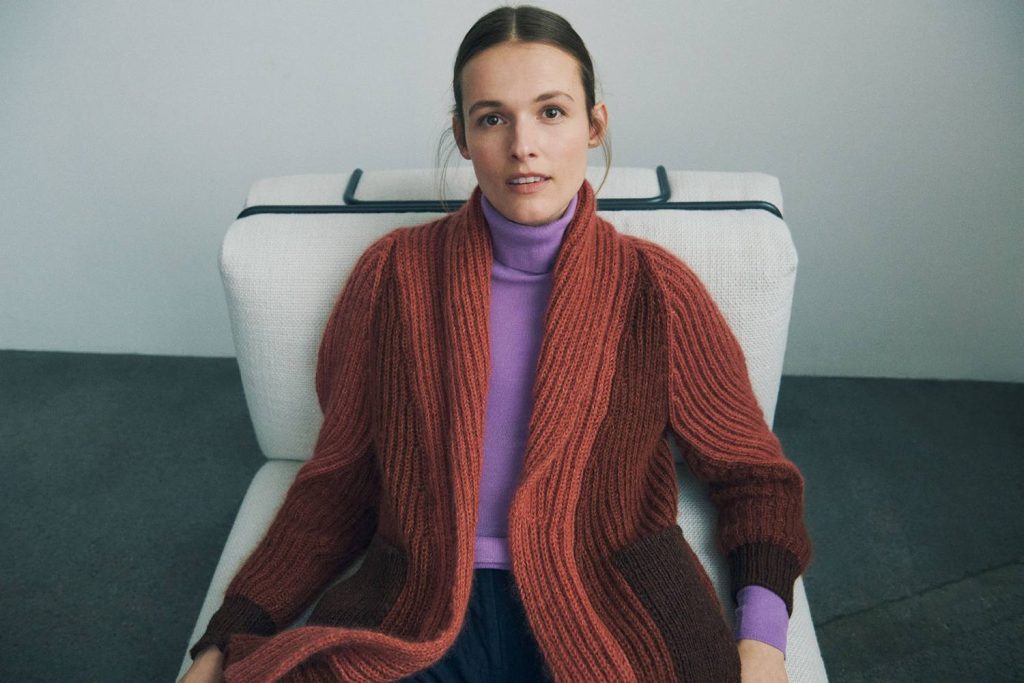
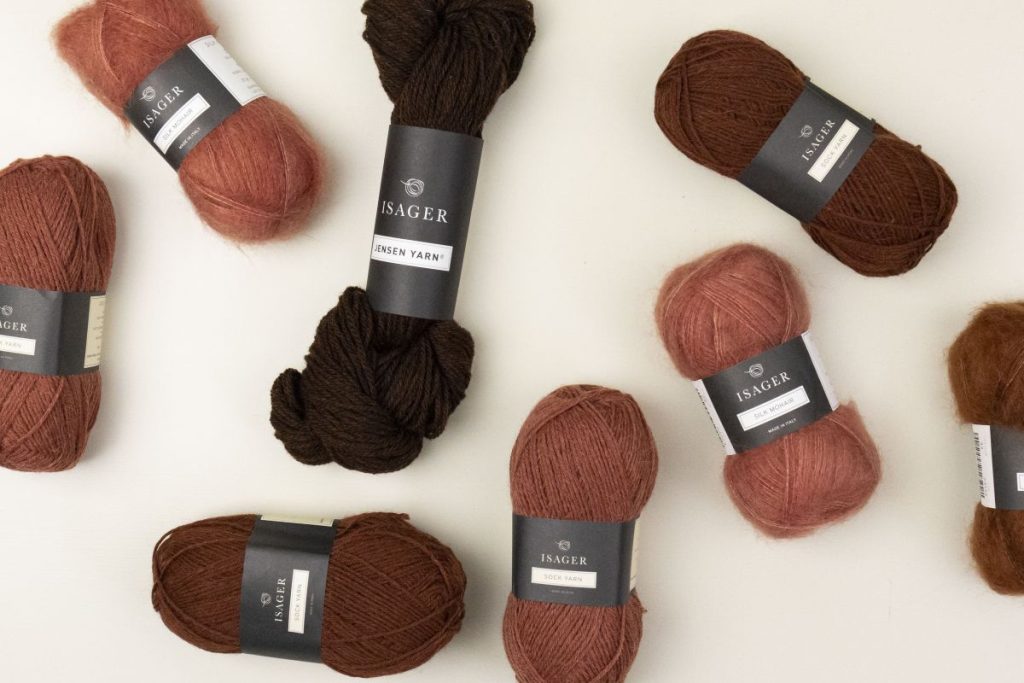
LONE CARDIGAN / Design: Helga Isager
Lone Cardigan was first released 10 years ago in the book Room 606.
I have always liked the design and thought that it deserved a second life!
This version I have knitted in Isager Sock Yarn and Silk Mohair with edges and pockets made in one strand of Isager Jensen Yarn.
The cardigan is worked from the bottom-up and the brioche knitted parts are sewn together.
10 years ago it was not as common to use Italian cast-on/off so, these techniques has been added to the pattern which now also comes in two different lengths.
MATERIALS
Isager Silk Mohair
Isager Sock Yarn
Isager Jensen Yarn
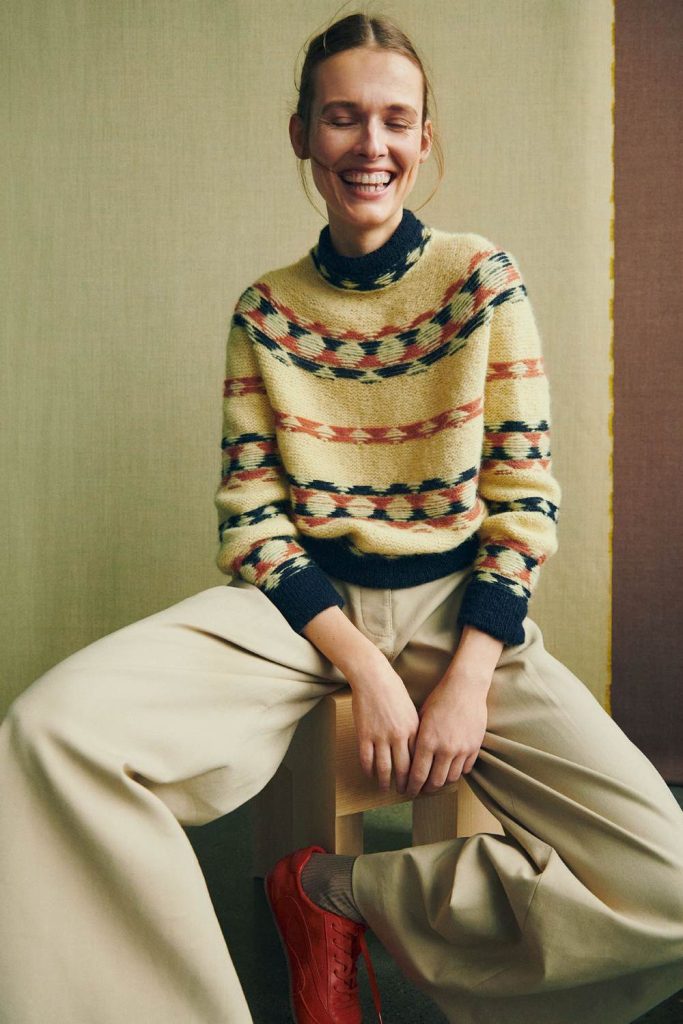
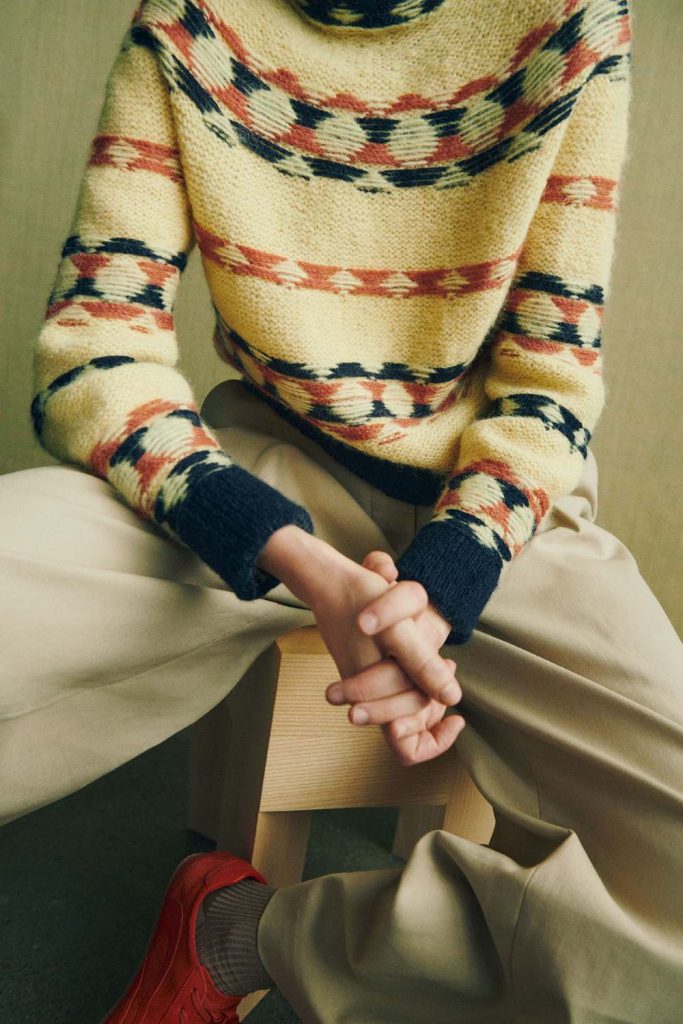

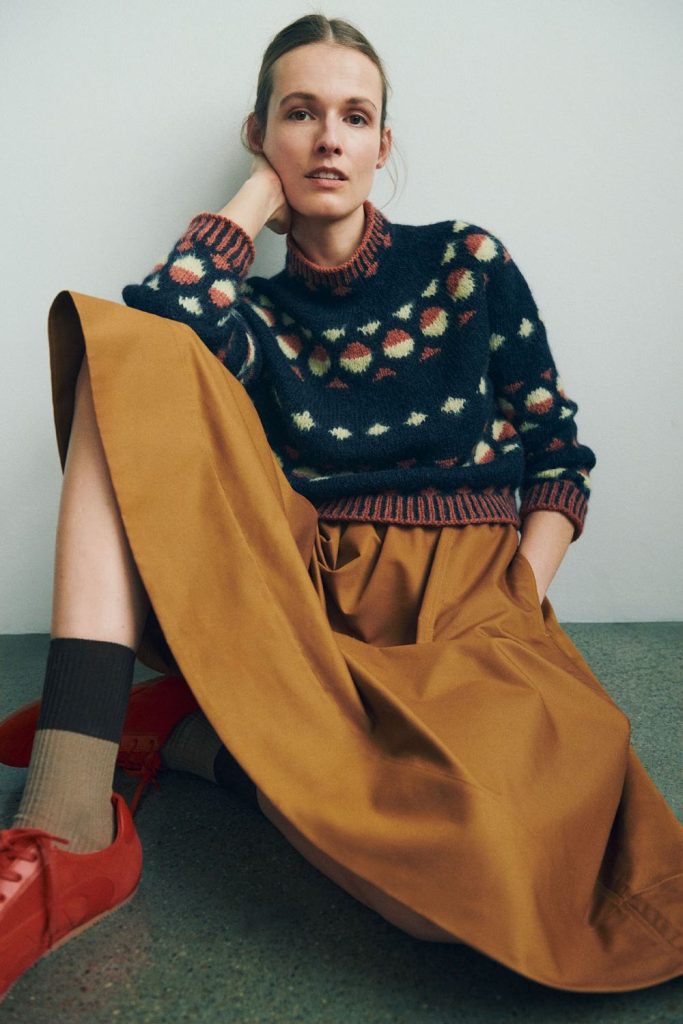
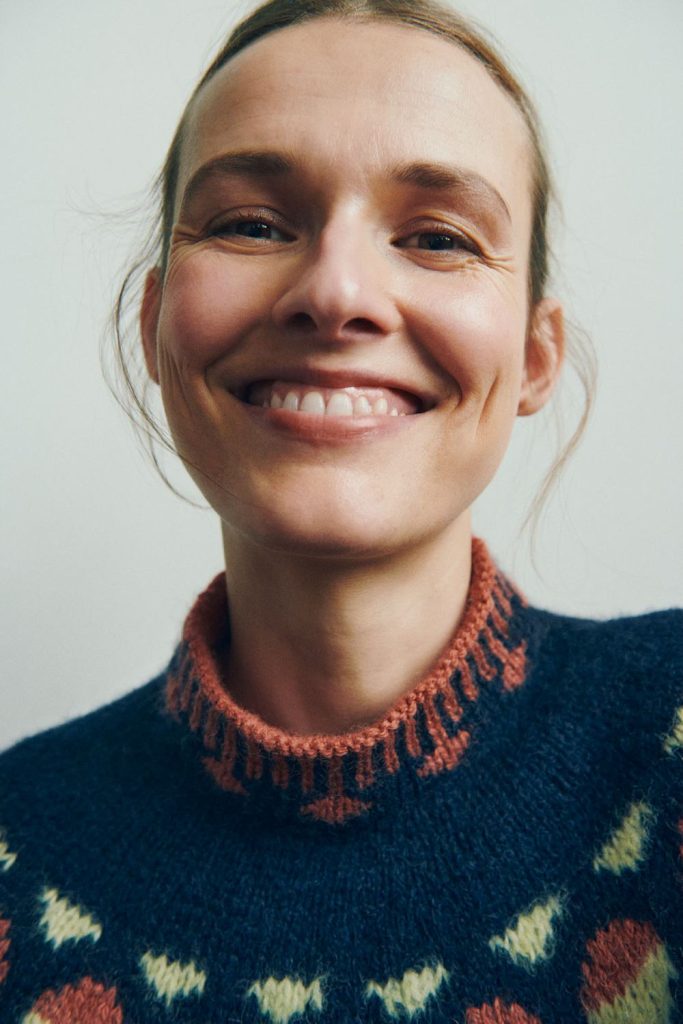
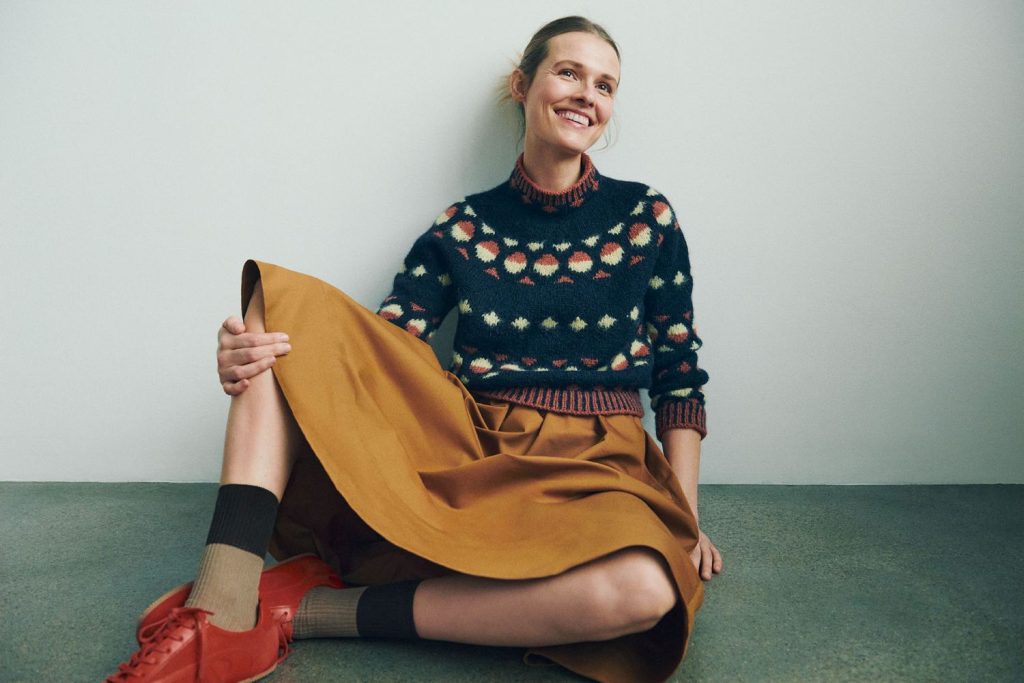

GUNTA SWEATER / Design: Helga Isager
The patterns on Gunta Sweater are inspired by the sketch by Gunta Stoltz which was the starting point for my 1919 collection. It is relatively new for me to be working with fair isle/jacquard knitting (knitting with multiple colors at once), but a world of opportunities that opens, when you manage to hold the strands correctly.
Gunta Sweater is worked from the top-down. Firstly, stockinette stitches are worked back and forth while the neck is shaped, giving the sweater a nice fit with a little more height in the back. Then the work is joined, and the yoke is worked in the round in stockinette and jacquard. At the bottom of the armhole, the stitches for the arms and the body are separated and each part is finished individually, in pattern. Finally, folded edges are worked on both sleeves and body, and stitches are picked up along the neckline to make a folded edge with jacquard pattern.
The sweater is beautiful from both the right and the wrong side.
MATERIALS
Isager Alpaca 3
Isager Soft
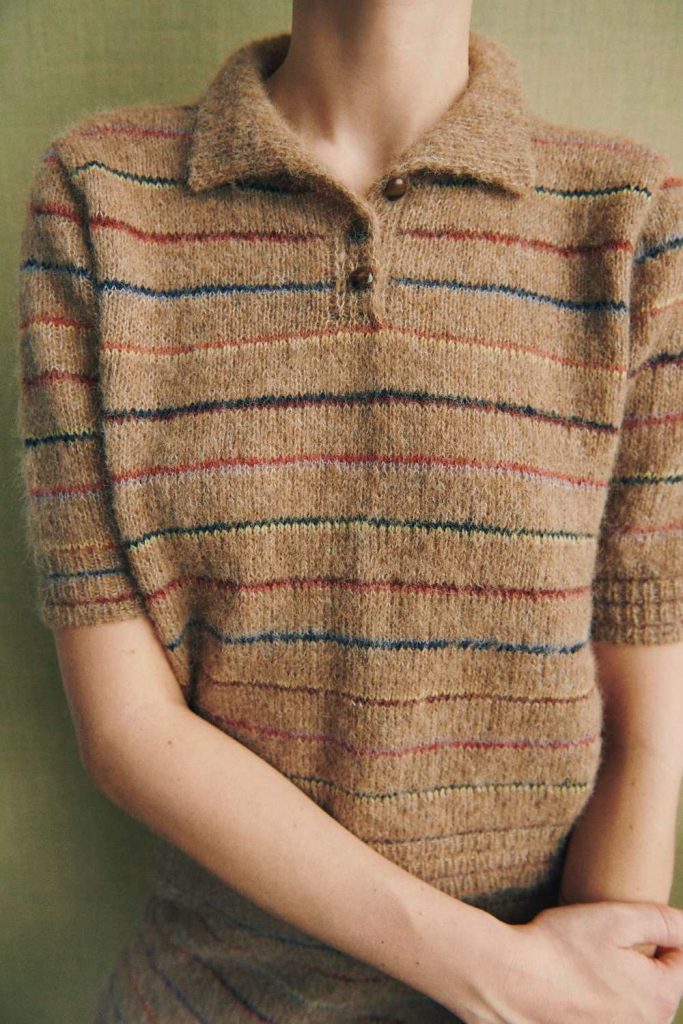
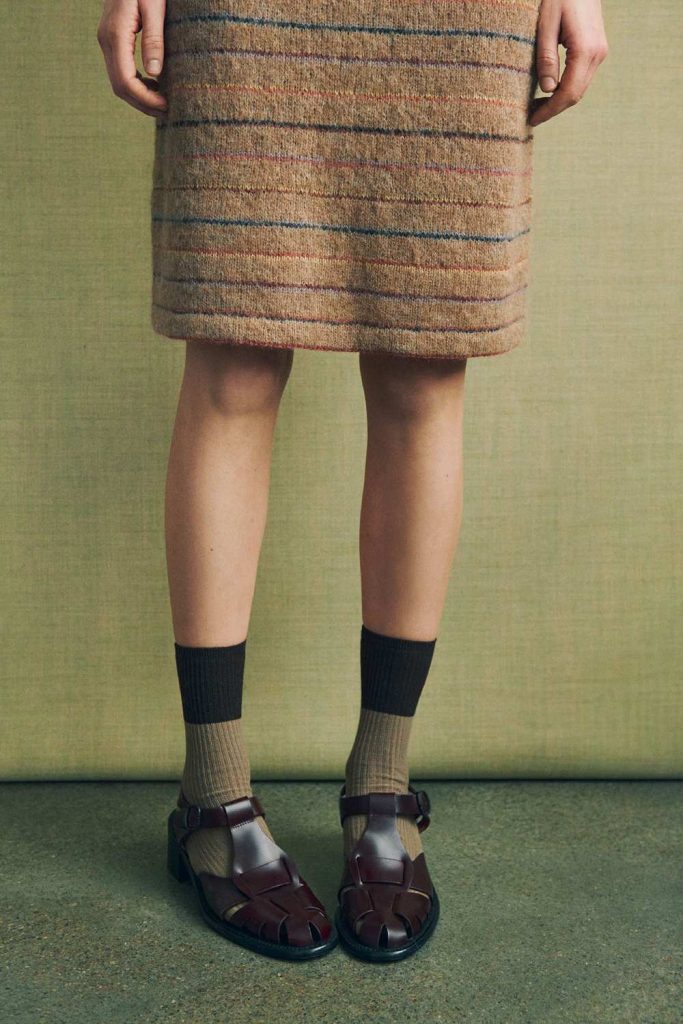
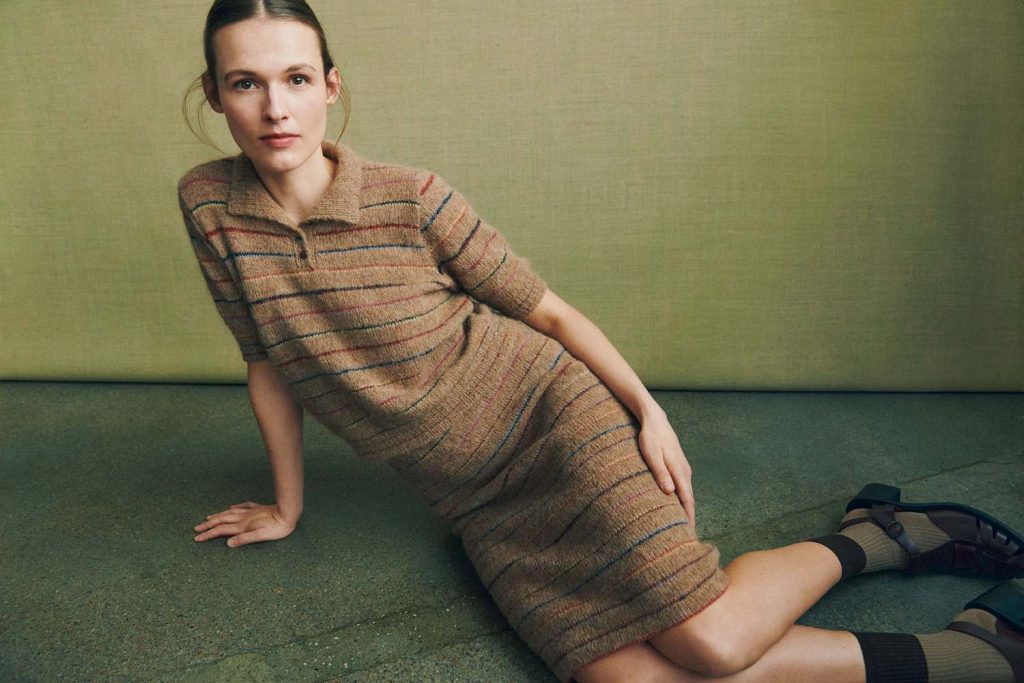

GUNTA SHIRT & SKIRT
/ Design: Helga Isager
The set Gunta Shirt & Skirt is knitted with one strand of Isager Soft Fine with stripes in Isager Tvinni, Highland, Alpaca 2 and Silk Mohair – all scrap yarn can be used, as long as the gauge is similar.
Gunta Skirt is worked from the top down, making it easy to adjust the length. The folded edge at the waistline is made with open cast-on which gives an elastic edge. Then short rows are worked, making the skirt higher in the back to give it a nice fit.
Gunta Shirt is a classic polo shirt with short set-in-sleeves. The collar is worked in a combination of regular ribbing and double knitting and the ribbed edges have stripes in stockinette stitches.
Gunta Shirt is worked in four parts that are sewn together. Good finishing takes time, but the result at the end is worth it!
MATERIALS
Isager Soft Fine
Scrap yarn for stripes e.g. Isager Tvinni, Highland, Alpaca 2 and Silk Mohair

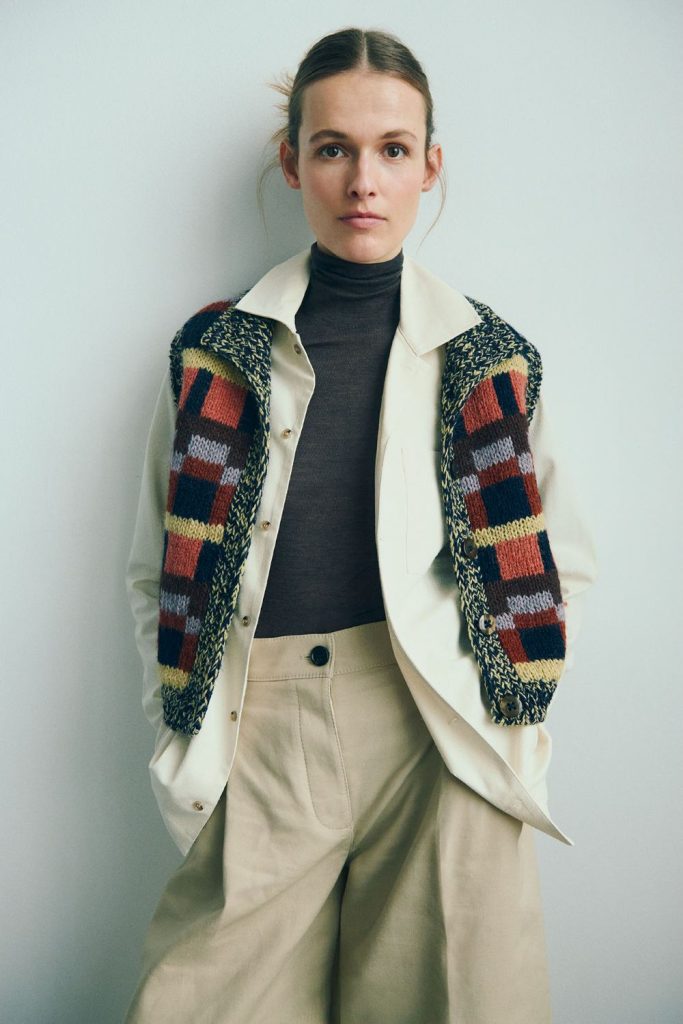
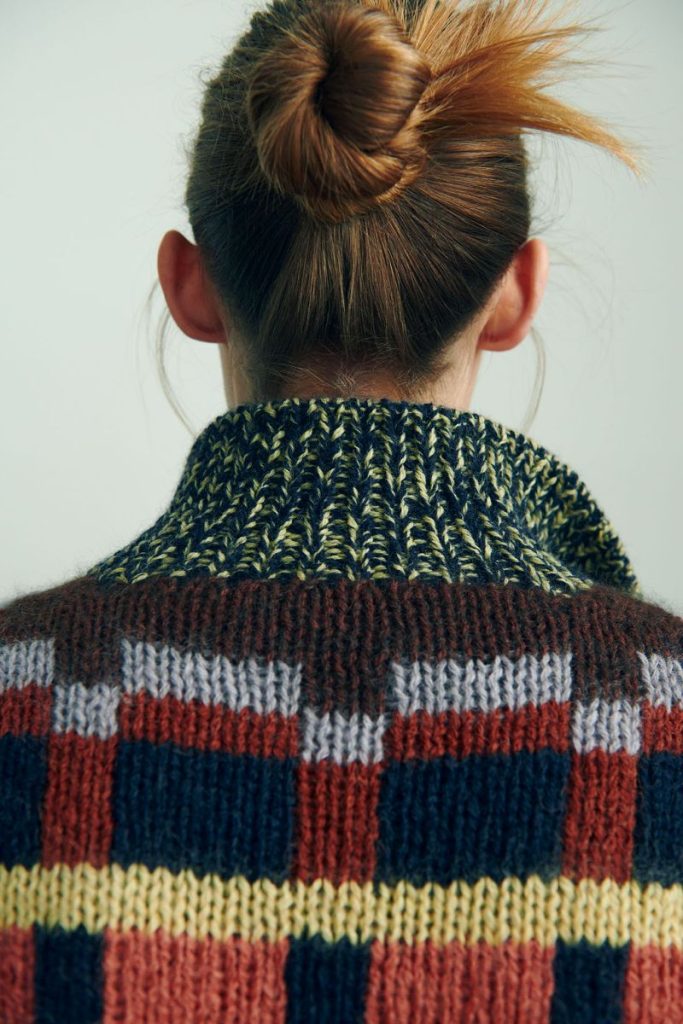
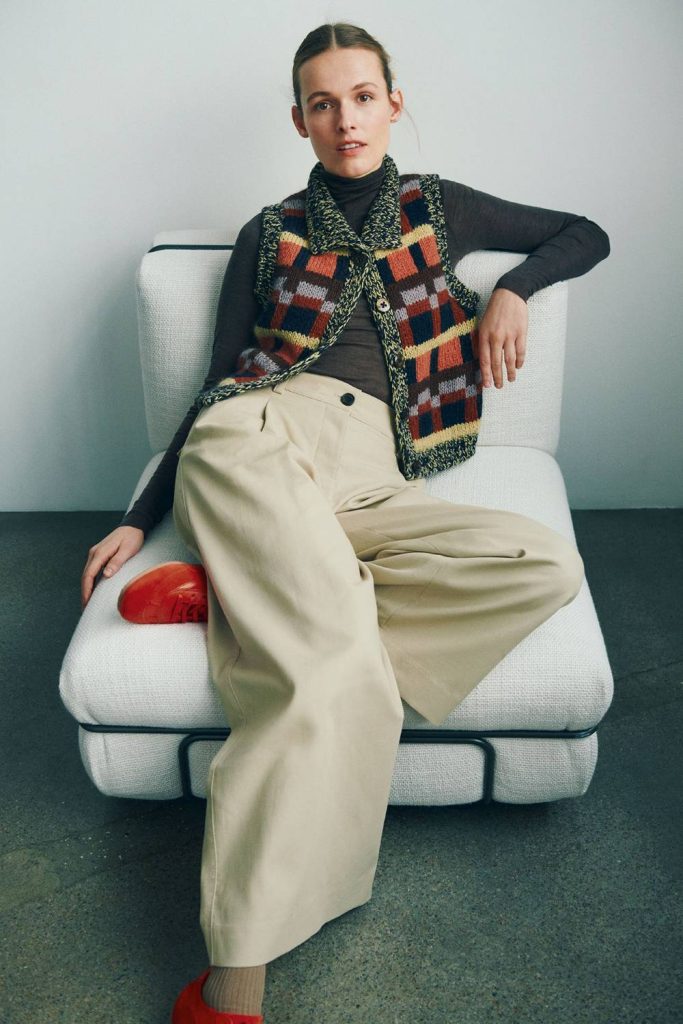

ANNI VEST / Design: Helga Isager
I first used double knitting and marled ribbing in Anni Cowl, but I became so fond of this combination that I had to add a vest with the same pattern, to the collection. The two layers of knitted material make the vest windproof, and perfect to use as outerwear in unpredictable spring weather.
Anni Vest is worked back and forth, from the bottom, in one piece. At the armhole the work is separated, finishing the back and front pieces individually. Stitches are picked up for the marled neck- and sleeve edges. Helga Jóna has made tutorial videos for both double knitting, increases in double knitting, and short rows in double knitting so, fear not, if these techniques are also new to you.
MATERIALS
Isager Alpaca 3
Isager Highland
Isager Silk Mohair
Isager Jensen Yarn